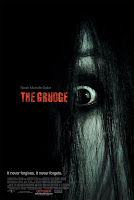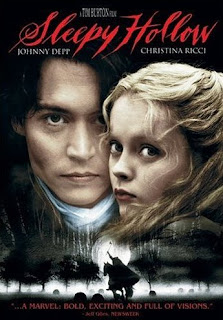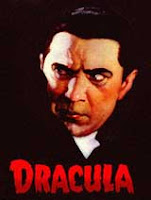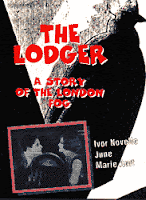
Click to enlarge.
This shooting schedual was made a lot earliear on, before we decided to change the male character of Eddy Butterworth to that of a female character, Mildred Butterworth
AS Media Studies Main Task
 Scream (1996)
Scream (1996) The Blair Witch Project (1999)
The Blair Witch Project (1999) Final Destination (2000)
Final Destination (2000) The Others (2001)
The Others (2001) The Ring (2002)
The Ring (2002) 28 Days Later (2002)
28 Days Later (2002) The Grudge (2004)
The Grudge (2004) The Uninvited (2009)
The Uninvited (2009)
 The film starts with mixed clips from the news; images of violence, panic and war. Here some sort of editing was probably used to create the lined, fuzzy look tat the clips posses, which is why the audience can tell they are from TV. The sound matching the clips is that of multiple broadcasts. It is safe to assume that the audio matches the visual media as each time a news clip changes their is a sort of tuning noise and the audio changes too. The fast jump cuts between the news clips creates a sense of confusion in the audience which continues throughout the first few minutes of the movie (and most of the film).
The film starts with mixed clips from the news; images of violence, panic and war. Here some sort of editing was probably used to create the lined, fuzzy look tat the clips posses, which is why the audience can tell they are from TV. The sound matching the clips is that of multiple broadcasts. It is safe to assume that the audio matches the visual media as each time a news clip changes their is a sort of tuning noise and the audio changes too. The fast jump cuts between the news clips creates a sense of confusion in the audience which continues throughout the first few minutes of the movie (and most of the film).Then the camera zooms out from the clips and the audience finally understand that the clips are not just there for some random reason, they are being played on a TV screen. The camera slowly pans to show a chimp watching the monitors. There is a strange sort of beating noise in the background which slowly fades into a long, low, creepy non-diegetic note as the shot changes. The next shot is an establishing shot which shows the chimp strapped to a table and wired to machines as it is forced to watch the violent images on screen. We cannot see the chimps face as the camera shoots from the back of him but the high angle shot creates the idea of the chimp being an innocent victim, to weak and small to break free. There is another shot of the chip form behind, only this time closer, which shows the animal turning its head from one TV screen to another, showing its confusion over the images.
Next comes a long shot of the chimp, from it's side, which pans across the room allowing us to see more of the chimp and it's surroundings. The mise-en-scene of the room is dark and simplistic looking, with an over head light shinning down on the chimp it seems almost like some sort of operating theatre or or science lab. The shot continues to pan until we see another monitor, in far away from the chimp and pointing in the wrong direction so obviously not for the animal to watch, which shows people in ski masks walking along a corridor. The indexical reference of ski masks tells the audience they are people breaking in, we also know that we are watching them through a security camera, the audience can tell this by the writing "Cam 3--- Cambridge Primate Research Centre" which is across the top of the monitor. The camera seems to be old or not very technologically advanced because it takes less frames of the people than a normal camera would which males the people appear to be in one place one second and slightly further on the next without having actually walked there. Most of the people continue to walk until they have gone out of frame but one them walks behind and puts something over the camera so we cannot see the people anymore, this adds to the confusion.
The shot changes to a tilted angle view of a door, through its window we can see on of the masked characters approach. The shot is deep focus as in the foreground we can (barely) see the bars of a cage but in the background we can clearly see the door. The way the shot has been done makes it seem to be a P.O.V. shot, perhaps from an animal in a cage. The fact that there is diegetic noise of a monkey banging on its cage and screeching also helps the audience to reach this conclusion.
Fantasy
The Fantasy genre includes films that usually have themes involving magic, supernatural events, make-believe creatures, or exotic fantasy worlds. The genre is considered to be separate and distinct in its own right from science fiction and horror, although the genres often over lap.
Mystery
Mystery is a sub-genre of the more general category, Crime film. It focus's on the efforts of the Detective, PI or 'armature sleuth', who must solve the mystery behind a terrible crime that has occurred; by means of clues, investigation, persistence and clever deduction.
Mystery films often follow two plot types, Open and Closed. The Closed story type conceals the true identity of the perpetrator until late in the story, adding the element of surprise during the suspects apprehension as the audience never truly know who it is, this causes the classic 'edge of the seat' feeling that mystery is so well known for. The Open mystery story type is in direct contrast to that of the Closed. As the title suggests, from the beginning of the film, the story is "Open" about the true identity of the criminal. The audience usually follows the 'Perp' throughout the movie as they commit the "perfect crime" and continue to elude the police, usually through clever planning or just plain luck.
Mystery usually follows either Todorov's Theory; where everything starts in harmony but then a crime is committed and everything is thrown into a "disequilibrium" and the hero/ main character has to solve the mystery for the equilibrium to be restored, or the follow Barthe's Enigma Code; the story starts with a problem, the "enigma" will then be establish as time goes on and in the very end the problem will be solved.
Horror and Mystery
Suspense is often maintained throughout out these movies as an important plot element. This can be done throughout the use of camera angles, sound track, mise-en-scene and surprising plot twists. Many directors, such as Alfred Hitchcock, use all of these techniques, but will sometimes allow the audience in on a pending threat and then draw out the moment for dramatic effect, however the time this is done for has to be precise; too long and the audience looses interest, too short and they expect it and are not half as surprised as they could be.


 The Last Samurai (2003) - directed by Edward Zwick
The Last Samurai (2003) - directed by Edward Zwick